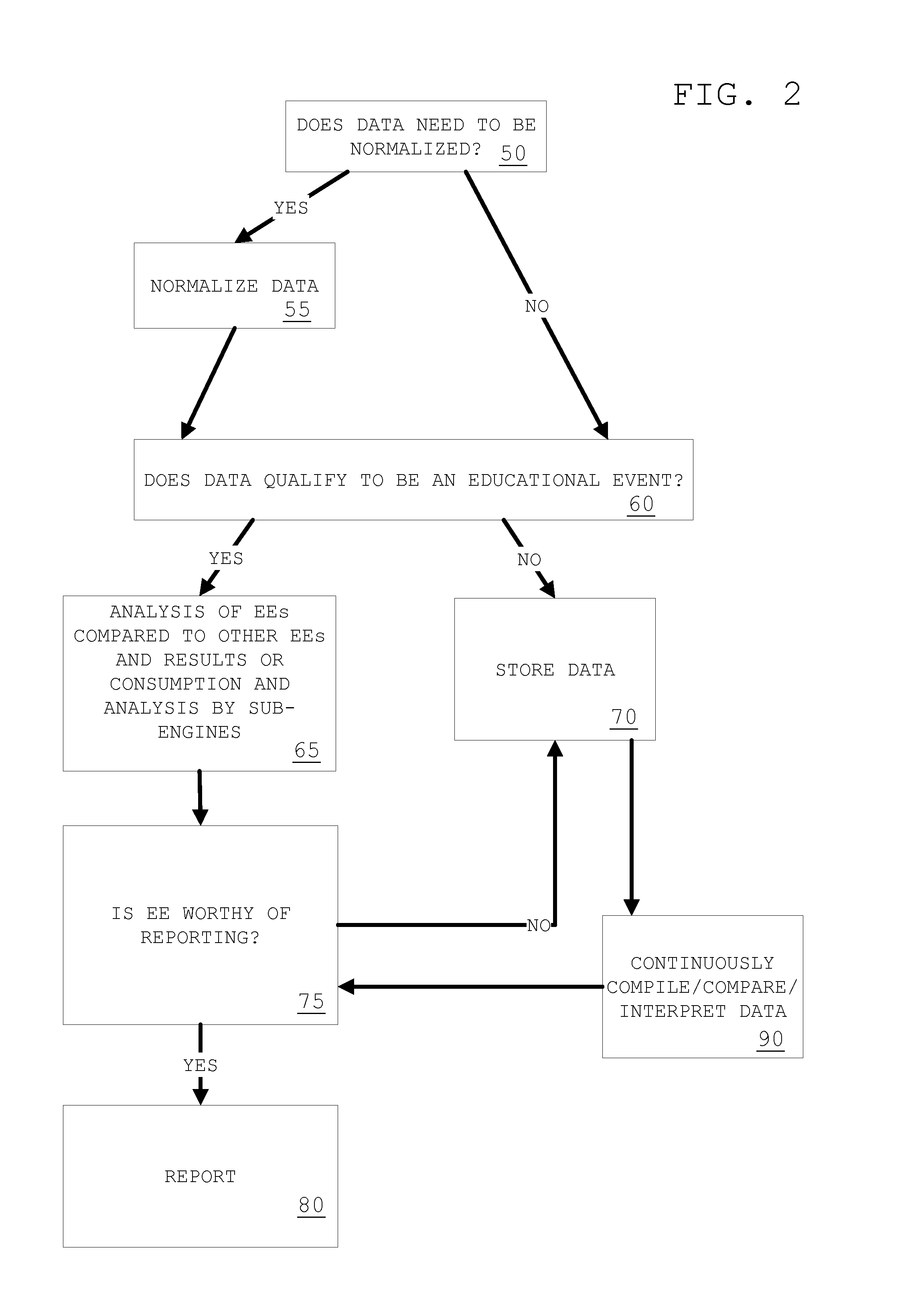Integrated Educational Stakeholder Evaluation and Educational Research System
a technology of educational stakeholder evaluation and educational research system, applied in the field of data collection, can solve the problems of large differences, insufficient consideration of outside influences and factors, and large errors, and achieve the effects of safe engagement and exchange of information, reducing the amount of stakeholder effort, and increasing the convenience of educational stakeholder experien
- Summary
- Abstract
- Description
- Claims
- Application Information
AI Technical Summary
Benefits of technology
Problems solved by technology
Method used
Image
Examples
Embodiment Construction
[0100]The accompanying drawings, which are incorporated in and constitute a part of this specification, illustrate embodiments of the process, method and system and, together with the general description of the invention given above and the detailed description of an embodiment given below, serve to explain the principles of the present invention. Similar components of devices, components, etc. are similarly numbered for simplicity.
[0101]FIGS. 1 and 2 show process flow diagrams for the data collection process and the data analysis process, respectively, for the invention. As shown in FIG. 1, the invention includes a data collection process and the possible conversion of such data into a form which is usable by the system, after which a categorization may take place. Information and data is captured and / or input using equipment (e.g., a computer). Captured information (behavioral and interactional information) 10 is converted into data 20. All data (captured data 30 and data converte...
PUM
 Login to View More
Login to View More Abstract
Description
Claims
Application Information
 Login to View More
Login to View More - R&D
- Intellectual Property
- Life Sciences
- Materials
- Tech Scout
- Unparalleled Data Quality
- Higher Quality Content
- 60% Fewer Hallucinations
Browse by: Latest US Patents, China's latest patents, Technical Efficacy Thesaurus, Application Domain, Technology Topic, Popular Technical Reports.
© 2025 PatSnap. All rights reserved.Legal|Privacy policy|Modern Slavery Act Transparency Statement|Sitemap|About US| Contact US: help@patsnap.com



